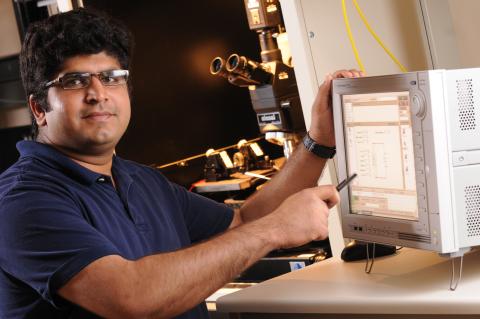ECE Ph.D. student Paragkumar Thadesar has has been named the recipient of the Outstanding Poster Paper Award from the IEEE 63rd Electronic Components and Technology Conference (ECTC), held last May in Las Vegas.
Paragkumar Thadesar has been named the recipient of the Outstanding Poster Paper Award from the IEEE 63rd Electronic Components and Technology Conference (ECTC), held last May in Las Vegas. A Ph.D. student in the Georgia Tech School of Electrical and Computer Engineering (ECE), Thadesar and ECE Associate Professor Muhannad Bakir will be presented with this honor at the IEEE 64th ECTC to be held in Orlando May 27-30; Bakir was a coauthor on the paper and serves as Thadesar's Ph.D. advisor.
The title of the award-winning paper is “Fabrication and Characterization of Novel Photodefined Polymer-Enhanced Through-Silicon Vias for Silicon Interposers.” Silicon interposers with high-density metallization help support multiple silicon chips atop with high bandwidth-density communication between the chips, and consequently, they help obtain compact integrated circuit (IC) systems. As a result, silicon interposers have been widely explored by both the semiconductor industry and academia for a wide range of applications from mobile phones to high-performance computing in supercomputers and data centers. State-of-the-art vertical metal interconnections, also known as through-silicon vias (TSVs), help connect chips atop a silicon interposer to an organic substrate below the interposer. However, these state-of-the-art TSVs exhibit a large electrical loss, which becomes a concern at higher frequencies.
To address this challenge, Paragkumar and Bakir designed, fabricated, and characterized photodefined polymer-embedded vias with copper vias within polymer wells in silicon. It is a unique vertical metal interconnection technology with the fabrication ease of silicon interposers and the electrical advantages of competing glass interposers. The polymer-embedded vias promise approximately 80 percent reduction in TSV insertion loss at 50 GHz compared to the state-of-the-art TSVs with similar dimensions.
